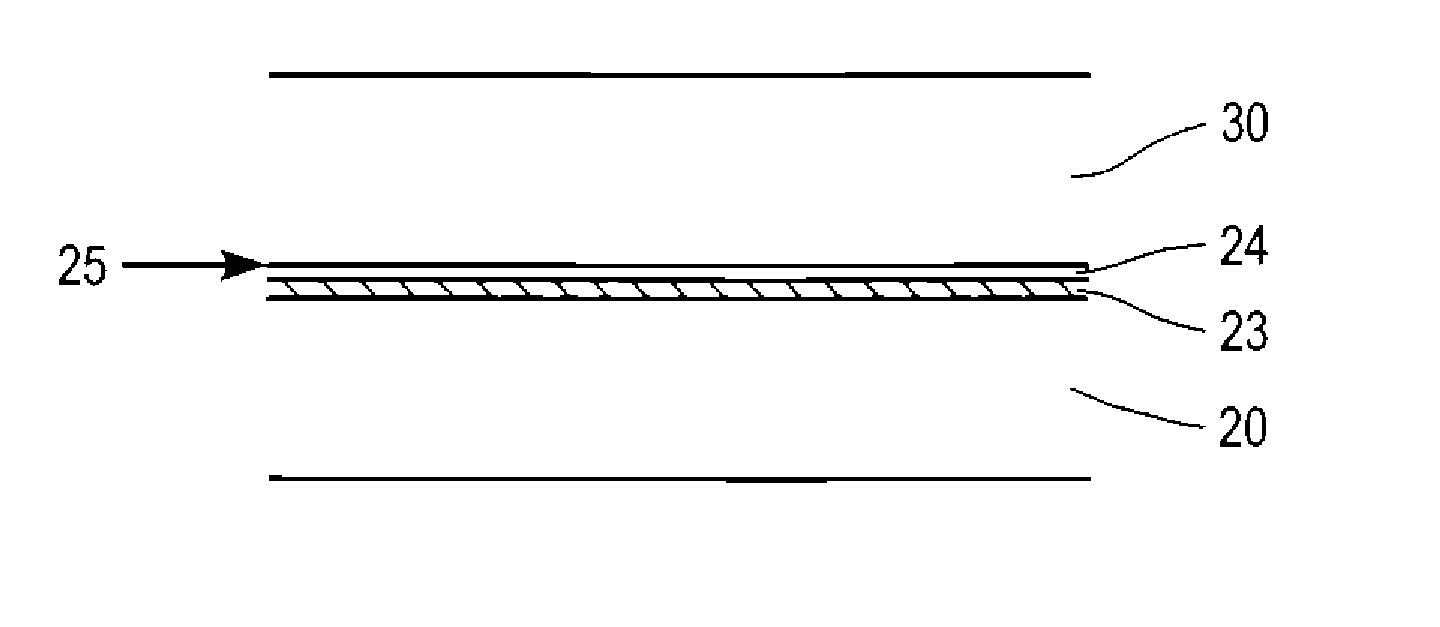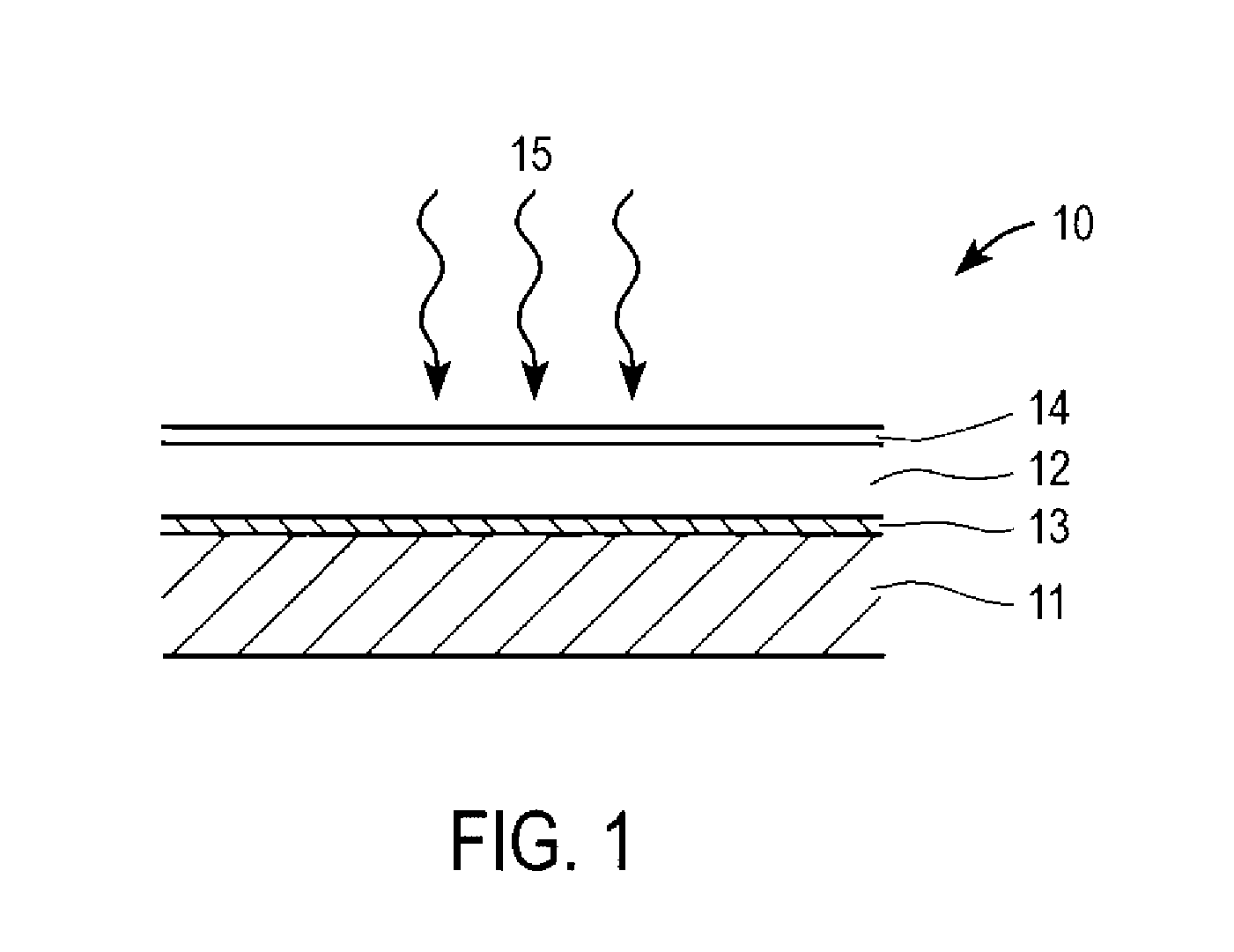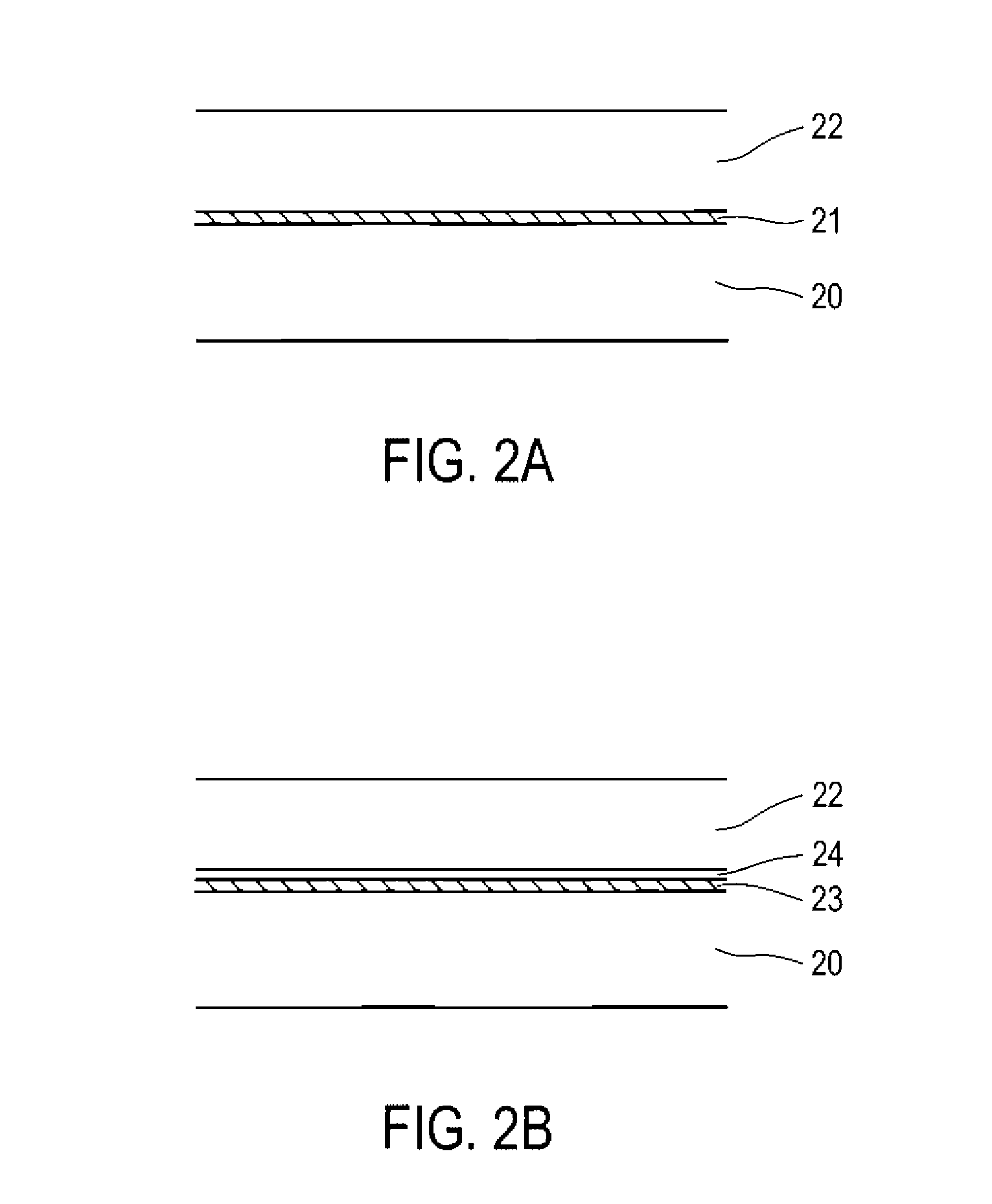Technique For Preparing Precursor Films And Compound Layers For Thin Film Solar Cell Fabrication And Apparatus Corresponding Thereto
a technology of precursor films and compound layers, which is applied in the direction of sustainable manufacturing/processing, thermoelectric devices, and final product manufacturing, etc., can solve the problems of poor adhesion characteristics, low band gap, and high cost of equipment, and achieve low throughput, low material utilization, and high equipment cost
- Summary
- Abstract
- Description
- Claims
- Application Information
AI Technical Summary
Problems solved by technology
Method used
Image
Examples
example 1
Cu / Ga / Cu / In Stack Formation:
[0032] A glass / Mo base is used in the experiment. Mo is sputter deposited to a thickness of about 700 nm on the glass sheet. Then SOLCu is employed to electroplate 150 nm thick Cu sub-layer over the Mo surface at a current density of 5 mA / cm2. The resulting Cu sub-layer is uniform and smooth with 3-5 nm surface roughness. A 100 nm thick Ga layer is deposited on the Cu sub-layer using SOLGa at a current density of 10 mA / cm2. A smooth and shiny silver-colored layer is obtained. SOLCu solution is utilized again to deposit 50 nm thick Cu sub-layer over the Ga layer at a current density of 5 mA / cm2. No Ga is lost into the SOLCu during Cu plating since the plating potential of Cu with respect to a calomel electrode placed into the solution was measured to be in the (−1 to −2 V) range. Such high cathodic potential protects the Ga layer from dissolving and also allows deposition of a small-grained and continuous Cu sub-layer on the Ga surface. After the formati...
example 2
Cu / Ga / Cu / In / Cu Stack Formation:
[0033] A glass / Mo base is used. Mo is sputter deposited to a thickness of about 700 nm on the glass sheet. Then SOLCu is employed to electroplate 150 nm thick Cu sub-layer over the Mo surface at a current density of 5 mA / cm2. The resulting Cu sub-layer is uniform and smooth with 3-5 nm surface roughness. A 100 nm thick Ga layer is deposited on the Cu sub-layer using SOLGa at a current density of 10 mA / cm2. A smooth and shiny silver-colored layer is obtained. SOLCu solution is utilized again to deposit 10 nm thick Cu sub-layer over the Ga layer at a current density of 5 mA / cm2. After the formation of the 10 nm thick Cu sub-layer over the 100 nm thick Ga layer, SOLIn is used at 15 mA / cm2 current density to form a 400 nm thick In layer. Over the In layer, another Cu sub-layer is plated using SolCu to a thickness of 40 nm. No In is lost into the SOLCu during Cu plating since the plating potential of Cu with respect to a calomel electrode placed into the ...
example 3
Cu / In / Cu / Ga Stack Formation:
[0034] A glass / Mo base is used. Mo is sputter deposited to a thickness of about 700 nm on the glass sheet. Then SOLCu is employed to electroplate 150 nm thick Cu sub-layer over the Mo surface at a current density of 5 mA / cm2. The resulting Cu sub-layer is uniform and smooth with 3-5 nm surface roughness. A 400 nm thick In layer is deposited on the Cu sub-layer using SOLIn at a current density of 15 mA / cm2. SOLCu solution is utilized again to deposit 50 nm thick Cu sub-layer over the In layer at a current density of 5 mA / cm2. No In is lost into the SOLCu during Cu plating since the plating potential of Cu with respect to a calomel electrode placed into the solution is measured to be in the (−1 to −2 V) range. Such high cathodic potential protects the In layer from dissolving and also allows deposition of a small-grained and continuous Cu layer on the In surface, After the formation of the 50 nm thick Cu sub-layer over the 400 nm thick Ga layer, SOLGa is ...
PUM
| Property | Measurement | Unit |
|---|---|---|
| molar ratio | aaaaa | aaaaa |
| molar ratio | aaaaa | aaaaa |
| molar ratio | aaaaa | aaaaa |
Abstract
Description
Claims
Application Information
 Login to View More
Login to View More - R&D
- Intellectual Property
- Life Sciences
- Materials
- Tech Scout
- Unparalleled Data Quality
- Higher Quality Content
- 60% Fewer Hallucinations
Browse by: Latest US Patents, China's latest patents, Technical Efficacy Thesaurus, Application Domain, Technology Topic, Popular Technical Reports.
© 2025 PatSnap. All rights reserved.Legal|Privacy policy|Modern Slavery Act Transparency Statement|Sitemap|About US| Contact US: help@patsnap.com



